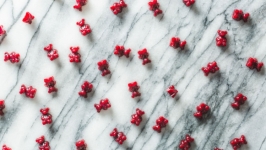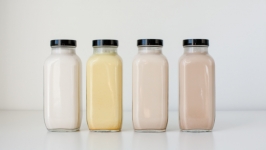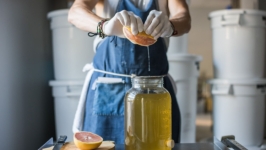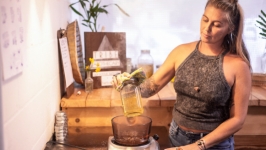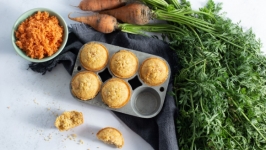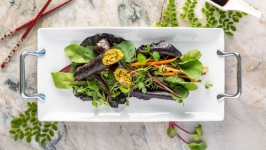Making Herbal Tinctures
Before the modern age of pharmaceuticals, plants and herbal remedies were commonly used to treat most ailments. In fact, many drugs in modern medicine originated from nature; codeine, quinine, aspirin and morphine, for instance, contain some amount of plant-derived ingredients. The widespread availability of manufactured drugs has not discouraged many people from returning to the roots of medicine to seek herbal remedies for healing and general well-being.
One way to use plant medicine is with tinctures, concentrated liquid extracts of one or more herbs and other vegetation. Herbs dry out and lose their vitality; tinctures, meanwhile, preserve the benefits of the plant longer than fresh herbs or powders.
Tinctures are typically made by soaking fresh or dried leaves, roots, bark, flowers and/or berries (depending on the plant species) in alcohol for several weeks to extract the active constituents which our bodies can absorb. The alcohol naturally draws out the medicinal qualities of the plant, such as resins and alkaloids, that are poorly soluble in water. After soaking, the herbal mixture is strained and the plant material is removed, leaving behind the concentrated liquid.
Generally easy to ingest, tinctures are also easy to transport and can be added to a portable first aid kit. Unlike herbal tea, which requires hot water and a cup, tinctures often come in one- and two-ounce bottles that fit in a purse or backpack and are allowed on airplanes. For children or other people for whom alcohol is not an option, tinctures can also be made using vinegar or glycerin (the latter derived from soybean, coconut or palm oil) and offer the same benefits as alcohol-based products.
If you are ready to try your hand at making tinctures at home, here are three easy-to-find plants you can use to get started.
Tulsi or Holy Basil: This sweet herb is one of my favorites. It is easy to grow and smells divine – no wonder I enjoy having this one in my garden. It is in the mint family (Lamiaceae) and is widely used in Indian Ayurvedic medicine as a symbol of vitality and fidelity. The leaves can help your body combat stress, promote longevity and elevate the spirit.
Reishi: This shelf mushroom grows from Northeast Florida to North Carolina. Like many mushrooms, reishi is used as an immune stimulant and has been part of a common cancer treatment in Japan and China for more than 30 years. It supports the body in combating stress and improving sleep. Unlike edible mushrooms, reishi is rather bitter and lends itself to alternative ways of consumption like tincture or powder. NOTE: If foraging for mushrooms, ensure proper identification before ingesting any fungi found in the wild.
Elderberry: Grown in Northeast Florida, the Elder shrub is widely used in Europe and the US to stimulate the immune system. Both the flowers and the berries have medicinal properties and can be used in teas and tinctures. Elderberry is one of my favorites for its deep, rich purple/red color, which lends itself to easy ingestion, especially for children as it looks like juice. High in antioxidants with a slightly sweet flavor, elderberry tincture is taken as a remedy for colds, flu, fever and sinusitis. For more information on using this plant, see The Healing Power of Elderberry.
BASIC TINCTURE RECIPE
I use a traditional way of making herbal medicine, which is not always precise. For dry herbs, use a 1:5 ratio (1 part herbs to 5 parts alcohol). For fresh herbs, the ratio is 1:2 because you need to take into consideration the amount of water in the plant matter. The instructions below are based on using dried plant matter and therefore the 1:5 ratio. You can make tinctures individually or you can combine up to 5 herbs in a vessel and make a mixed tincture. I prefer to make tinctures separately in case I want to use the herbs for different combinations. I generally choose a grain alcohol because they have the highest percentage of alcohol, but you can use any type of distilled spirit.
MATERIALS
herbs, glass jar and lid, cheesecloth for straining, grain alcohol, vinegar or glycerin
INSTRUCTIONS
Begin by weighing your plant matter. Once the herbs are weighed out, place them into the jar. Fill the jar up to the top with alcohol and cover with the lid. Give the mixture a good shake. Label the jar with name of herb, alcohol/liquid type and date. Place jar in a cool, dark place.
I generally store my tinctures in the pantry where they will be out of the way for about 6 weeks. Occasionally during this time, I shake them as I think about it, but otherwise, the alcohol does the work. After 6 weeks, strain the herbs with the cheesecloth. The remaining liquid is the tincture.
TRY THESE COMBINATIONS
If not foraging locally or growing your own, look for bulk food retailers or shop carefully online.
Immune Booster: Elderberry, echinacea, reishi and peppermint
Stress Less: Tulsi, reishi, lemon balm and skullcap
Sleep Well: Reishi, skullcap, passion flower and peppermint
Lady Love: Raspberry leaf, tulsi, lemon balm and nettle



